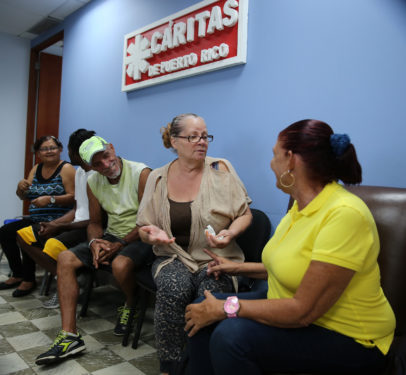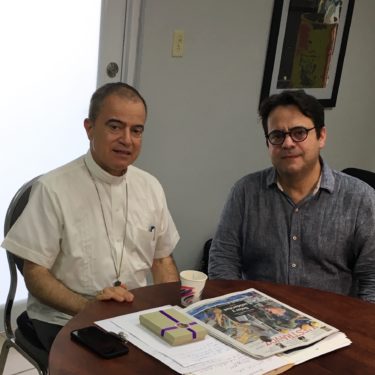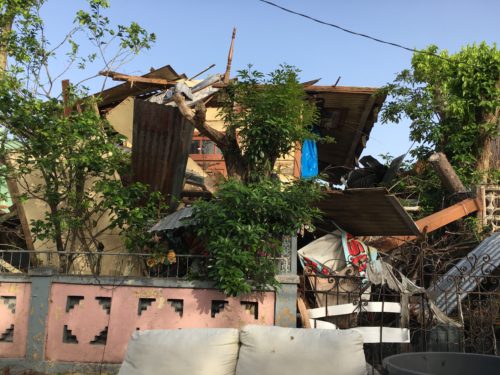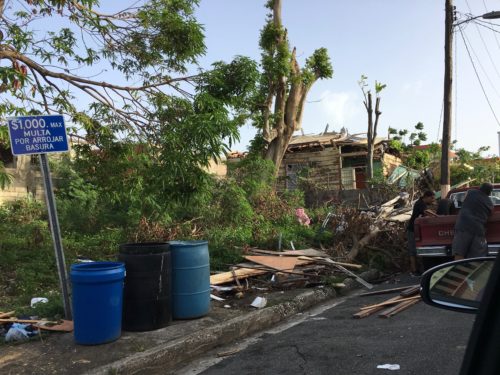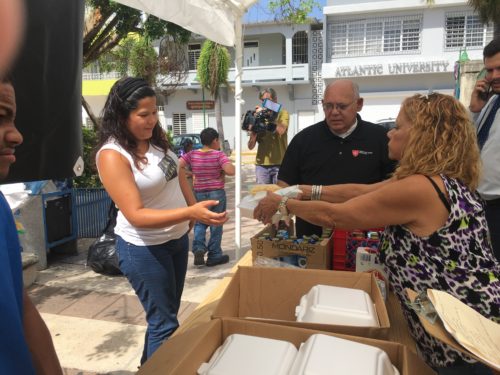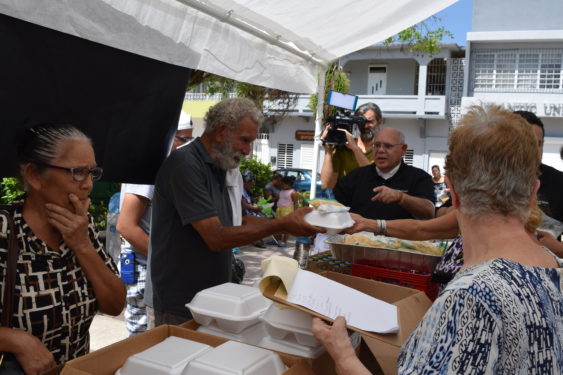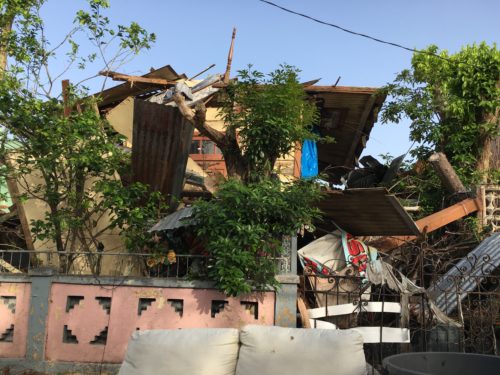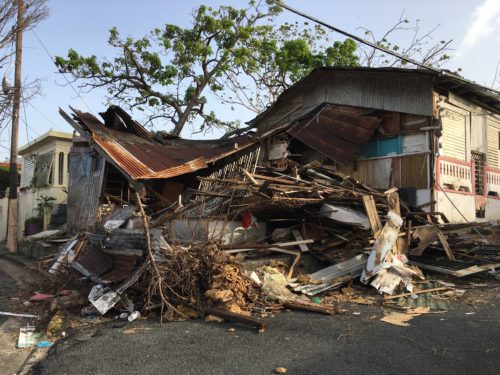Miracles Exist Amidst the Destruction
By Jorge I. Dominguez-Lopez
We landed in San Juan exactly at noon on Thursday, Oct. 19. It was one of those flights that could turn you into a praying man – just a long period of turbulence from Queens to Old San Juan. As the plane approached the airport two details stand out – the grayness of the trees and the colors on the roofs. Hurricane Maria had taken away the leaves and the roofs. Naked trees and roofless houses now covered with plastic tarps were the new face of San Juan from the unquiet comfort of my seat on the plane.
We went directly from the airport to the headquarters of Caritas Puerto Rico, the Catholic Charities equivalent on the island. A full month after the disaster, signs of the destruction are still very visible everywhere.
Caritas Puerto Rico provides hot lunches, groceries, clothes, medical services, counseling and financial assistance to people in need. Their staff and many volunteers provide non-stop services to a constant parade of people whose lives and dreams have been shattered by the monstrous hurricane.
Father Enrique Camacho, director of Caritas Puerto Rico, looks like your 11th-grade math teacher and pretends he is not doing anything extraordinary. But he seems to be constantly solving five or six different problem simultaneously with an ever-present smile on his face. He doesn’t like assigning blame for the current situation. He is focused on solving the problems he faces and is always grateful for anyone’s help.
Manages a Smile
Enid Tirado, an accountant, has been working with Caritas Puerto Rico for three years. She is young and constantly flashes a 10,000-watt smile.
“I lost everything,” she said. “The hurricane blew away the roof of my house and everything was ruined.”
She still lives in her devastated home. Ten days ago, she received a tarp. Before that “we were literally sleeping under the stars.” She lives with her mother, sister and her nephews, who are two- and three-years-old.
Despite her own hardships, she continues her work at Caritas.
“I know better than anybody what these people are going through,” she said. “I am in the exact same situation. I know God is calling me to do this.”
Msgr. Mario Guijarro, the chaplain of the Order of Malta in Puerto Rico, drove us to one of the hardest-hit areas – Punta Santiago, a little beach town 40 miles from San Juan. As we neared the town we started to see concrete electrical posts fallen on the ground, dozens of them. The palm trees look scared of the wind – all the leaves pointing inland.
The only Catholic parish in town, Our Lady of Mount Carmel, is a nondescript building lacking all the niceties of religious architecture. Pope Francis had said he wanted the Church to be like a field hospital. In Punta Santiago, that’s not a metaphor. It’s a very direct and realistic description of the local parish.
The church has become a central command for recovery efforts. Each day they prepare and distribute 250 lunches donated by the Order of Malta, as well as groceries, medicines and other staples.
On the day we visited, the middle aisle of the church had been converted into a chiropractor and medical office. In the backyard there was a soup kitchen where they were preparing lunch. The car garage is now a storage room for the water, canned food and other supplies they have for the hurricane’s survivors, which is everybody in the town.
At the same time, a group of young people were getting ready to clean houses with two Sisters of the Savior who come from San Juan.
The atmosphere was joyous. There was another kind of happiness that is hard to explain or understand, but it was easy to feel.
“This place looked like an atomic bomb had fallen here,” said Father José Colón, the pastor of Punta Santiago. “They said a miracle had happened at Punta Santiago: none of the statues of the saints in this church suffered any damage even though the wind and water had busted the doors, and drawn the benches to the street.
“But I say the true miracle had been this religious experience, this encounter with Christ we have seen after the hurricane. People are more united, we are holding hands, we feel more like brothers and sisters. Old quarrels have been forgotten – we all have to give each other a hand and pull together ahead.”
The statistics coming out of the island – 90 percent of the population without electricity, 25 percent without drinking water – and the stories of corruption and incompetence from local authorities make people fear the worst for Puerto Rico. But the people we met embody faith and generosity. They gave us hope for the best.
When we visited Archbishop Roberto González to ask him about his fears and hopes for the future, the pain and exhaustion of the last month were reflected on his usually youthful face.
“First of all, I have no fears about the future,” he said.
“I feel very confident about the future because I have seen how our people have come together after the hurricane.”
Jorge I. Dominguez-Lopez is the editor of the Brooklyn diocesan monthly Nuestra Voz.

